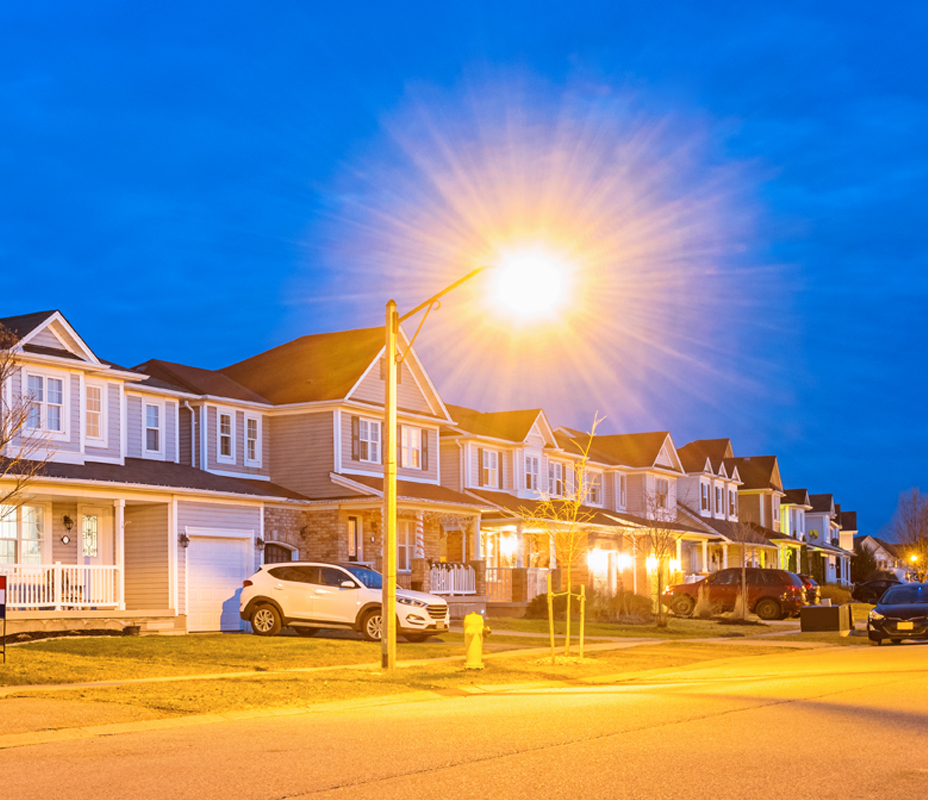Since LED street lights first entered the marketplace nearly a decade ago, one of the key lessons learned from neighborhood installations is that residents often prefer lower light levels, and warmer color temperatures.
Another aspect of street lighting that citizens are becoming increasingly concerned with is glare.
There is a need for neighborhoods to be beautifully lit and more visually comfortable than they would be with first-generation LED luminaires, while maintaining safety, light quality, and energy efficiency.
For residential street light applications, luminaire selection should include consideration of glare and its effect on motorists, pedestrians, cyclists, and residents.

“The ComfortView Story”
“The ComfortView Story”
Review this short video for a better understanding
of LEOTEK’s innovative solution to discomfort glare.
“…it should be used with the same prudence with which we use any other technology. This means that although LED lighting is an energy-efficient way to illuminate streets, it’s important to direct the light only where it’s needed; to make sure the emitted spectrum supports visibility, safety, and the health of humans and other living creatures; and to limit glare for pedestrians, bicyclists, and drivers.”
– Department of Energy (DOE), Get the Facts: LED Street Lighting, June 21, 2016
“The AMA also recommends all LED lighting should be properly shielded to minimize glare….”
– American Medical Association (AMA), AMA Adopts Guidance to Reduce Harm from High Intensity Street Lights (June 14, 2016)
“The IES is aligned with the AMA in support of the proper conversion of outdoor area and roadway lighting to LED light sources to reduce energy consumption, with proper optics and shielding to reduce glare and light trespass.”
– IESNA Position Statement PS-09-17, June 2017